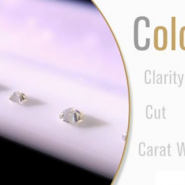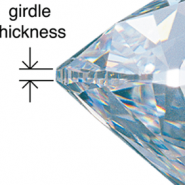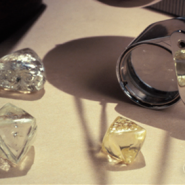When browsing for jewelry, one might be captivated by the glimmer of a diamond’s sparkle, and assume that most diamonds are colorless. And while it’s true that certain diamonds have colors so blindingly brilliant that they take on beautiful hues of the rainbow, truly colorless diamonds are actually quite rare.
Read More >>Few things in nature are absolutely perfect. This is also true with diamonds. As touched on in the first part of the clarity series, diamonds have internal features called inclusions and surface irregularities called blemishes. Together, inclusions and blemishes make up a diamond’s clarity characteristic.
Read More >>Diamond clarity is one of the four quality factors (the 4Cs) that describe and determine the value of a diamond. By definition, clarity means “a gemstone’s relative freedom from inclusions and blemishes.” These two terms are locational- blemishes are found on the outside of the gem and inclusions are located on the inside. Both of these clarity characteristics can dim the brilliance of a diamond, though some are so minute that they are invisible to the naked eye.
Read More >>When a diamond interacts with light, every angle and every facet affects the amount of light returned to the eye. The sparkle of a diamond, then, has everything to do with how well the cut of the diamond was planned and executed. Although a diamond’s value is based on its unique combination of color, clarity, cut, and carat weight (the 4Cs), a diamond’s cut is the most complex to assess, and it’s the only component that can be directly affected by the diamond cutter.
Read More >>Most consumers don’t realize the long, complicated, precarious journey a diamond takes from its humble beginning amidst tons of rock in the Earth to its sparkling transformation in a jewelry store counter. An especially critical point in the diamond’s journey is its time with the diamond artisan, who must cut the diamond to maximize its beauty.
Read More >>



